5 Flower-Loving Insects
5 Flower-Loving Insects
Happy early Mother’s Day from Pointe Pest Control! In the height of spring, it’s a common occurrence to see plenty of tiny critters flocking to the trees, plants, and flowers in our yards. Some don’t bring any harm to the foliage, while others leave every plant much worse than they found it. Most garden pests reproduce extremely quickly as well, so an infestation is imminent when a couple of hungry pests find the new growth in the garden. Flowers in particular add beautiful pops of color to any yard, but they lose their appeal when a bunch of insects chew through the petals in the span of a few days. Let’s take a look into five types of pests that seek out flowers for all kinds of reasons, most of which are not favorable to the plants or to us.
Stinging Insects
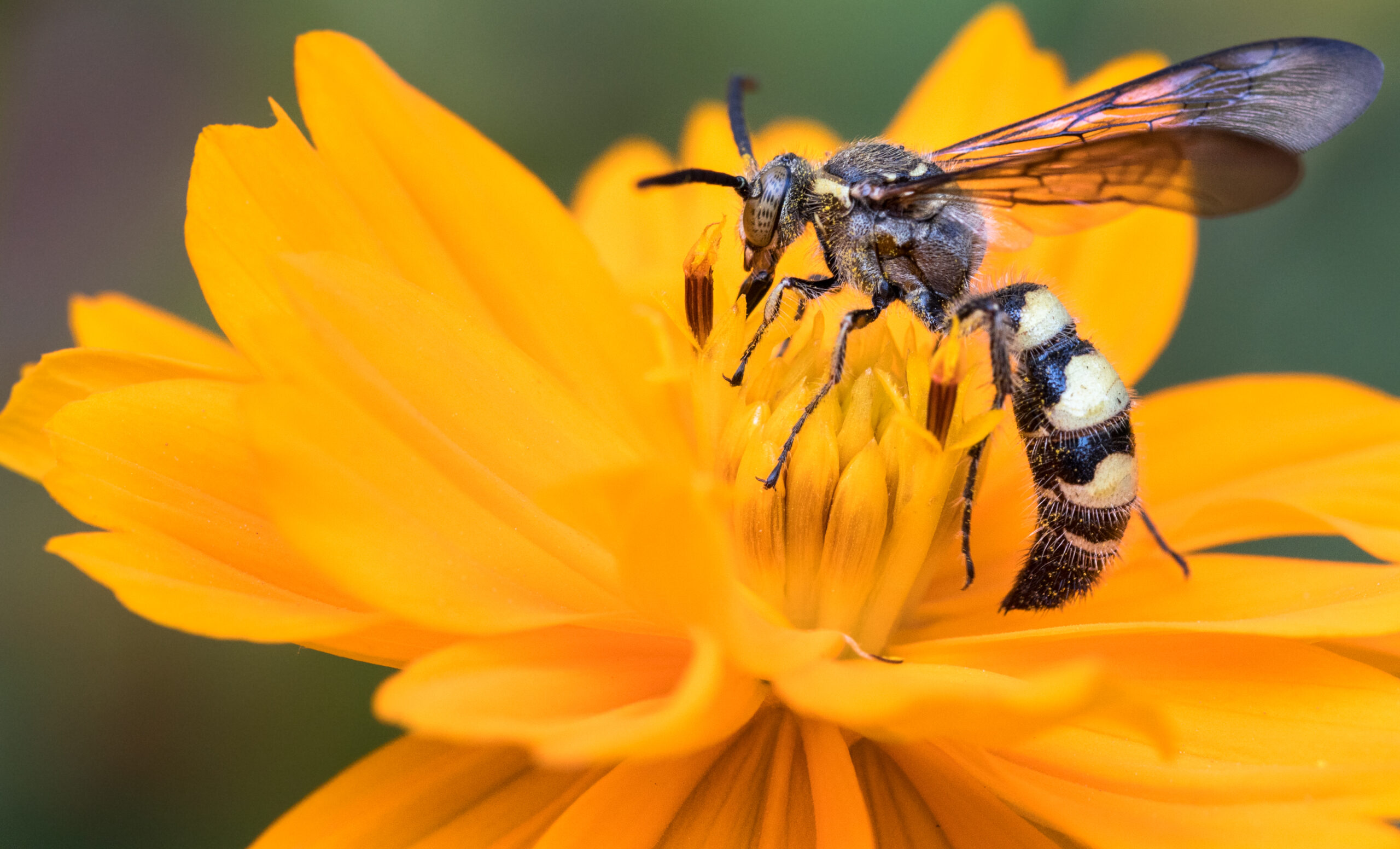
Favorites: rose, black-eyed Susan, honeysuckle, aster, lilac, lavender
This is the only beneficial pest category on the list, and it’s all because they don’t actually eat the vital parts of the plant when they visit the flowers. Bees and wasps only want flowers for their nectar and pollen, which they will then carry back to their colonies to feed everyone. Each ingredient provides different benefits for the insects. Nectar gives them energy, while pollen provides protein and is a reliable food source for the larvae in the hive. They pollinate without really trying as they go from flower to flower to gather their food. The yellow powder accumulates on the body of the insect when they land on the flower to gather the materials, and the pollen gradually falls off as the insect moves around. But honeybees also intentionally gather this pollen for their hive, as both nectar and pollen are needed to create their delicious honey. Wasps don’t make honey, so any nectar and pollen they gather is purely used as food for their energetic colony. It takes one look at a wasp to see that they are high-energy insects, and need to constantly consume nutrients to maintain their stamina.
All that being said, everything is still better in moderation. It is true that bees in particular are necessary for flowers to adequately pollinate every year, and the plants would not be able to reproduce the same without these pollinators. However, there is a major difference between a couple bees hovering above the flowers and a whole swarm invading the yard. Bees are relatively docile and will not attack humans for no reason, so the only true concern is if someone in the immediate vicinity is allergic to bee stings. But wasps, hornets, and yellow jackets are all more aggressive than bees, especially when their nest is disturbed in any way. It doesn’t help that wasps can sting repeatedly, so a bad situation can quickly turn worse when an angry swarm emerges from the nest. It’s great that this group of insects keeps our flowers healthy, as long as their homes are far from our own.
Caterpillars
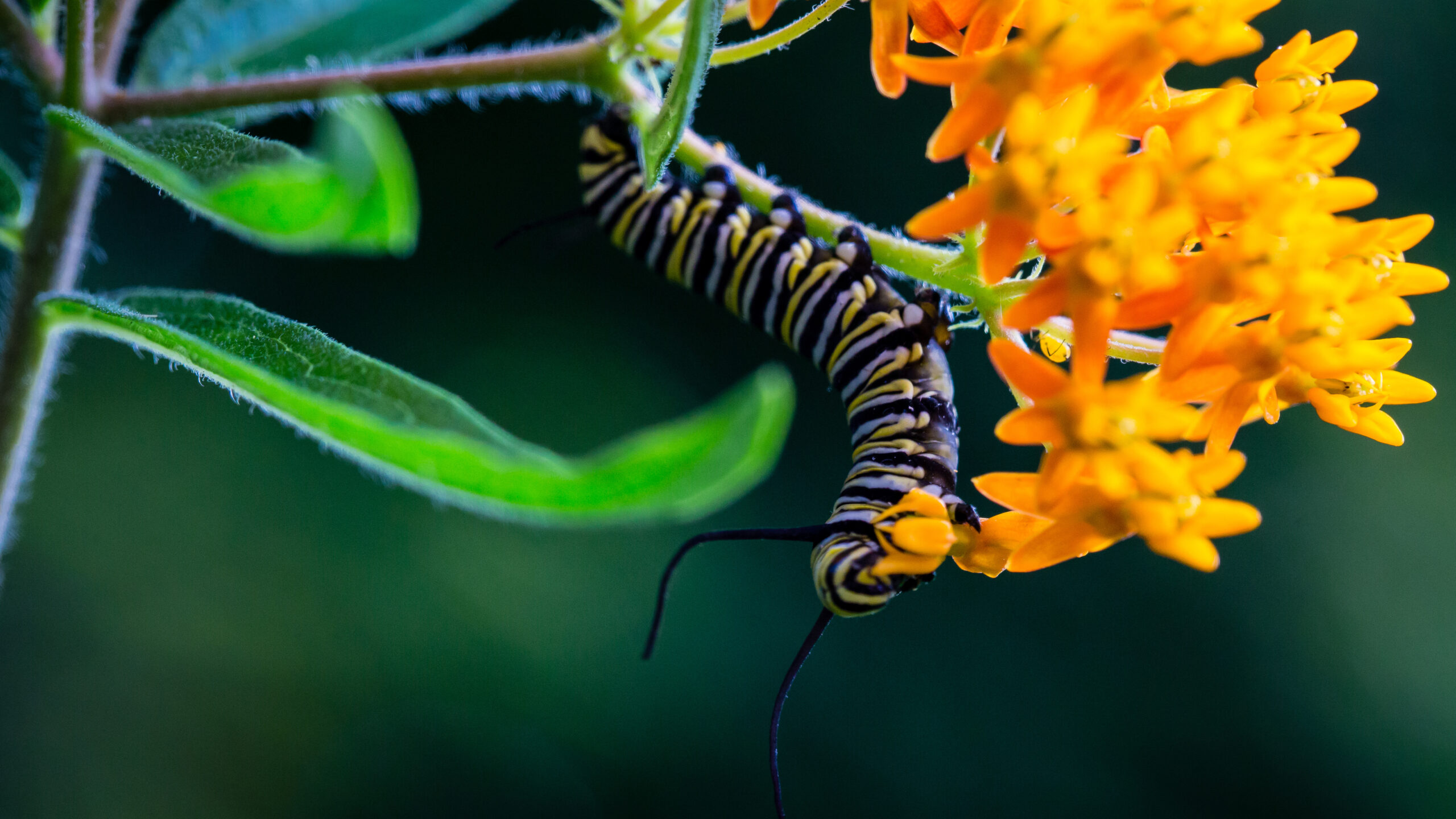
Favorites: violet, daisy, aster, carnation, sunflower, iris
The younger life stage of butterflies and moths is much more destructive than its adult self. While butterflies and moths are both helpful pollinators, caterpillars only seek out flowers to devour them from the inside. They like to stay on the stems most often, and it’s common to see a wriggling caterpillar trying to blend in with the green stalk while they munch on the plant. They can even tunnel down into thick stems and hide within the plant, which makes it much easier for them to evade detection as they feed. Caterpillars do gain nutrients from all parts of the flower, as they will inch their way up the plant to the actual flower from time to time. This is where moths and butterflies lay their eggs in order to give the larvae an immediate food source, and it provides food for the pupal stage as well.
These feeding habits may not sound that bad on the surface, but caterpillars can actually deal some irreversible damage to flowers after a while. When they feed from the stems for an extended amount of time, they disrupt the water vessels within the stem. This will gradually weaken the plant until it cannot recover from the damage. Caterpillars prefer woody stems for the thickness, since the pupae will only fatten up with more feeding. Some flower species are more durable than others, and can bounce back from a hungry caterpillar’s feedings. But even those flowers can have trouble recovering if their roots are targeted. Caterpillars may go into the soil to stay hidden, and can eat through some of the roots while they’re nearby. Luckily, caterpillars are easy to remove by simply plucking them off of the plant when you spot one.
Aphids
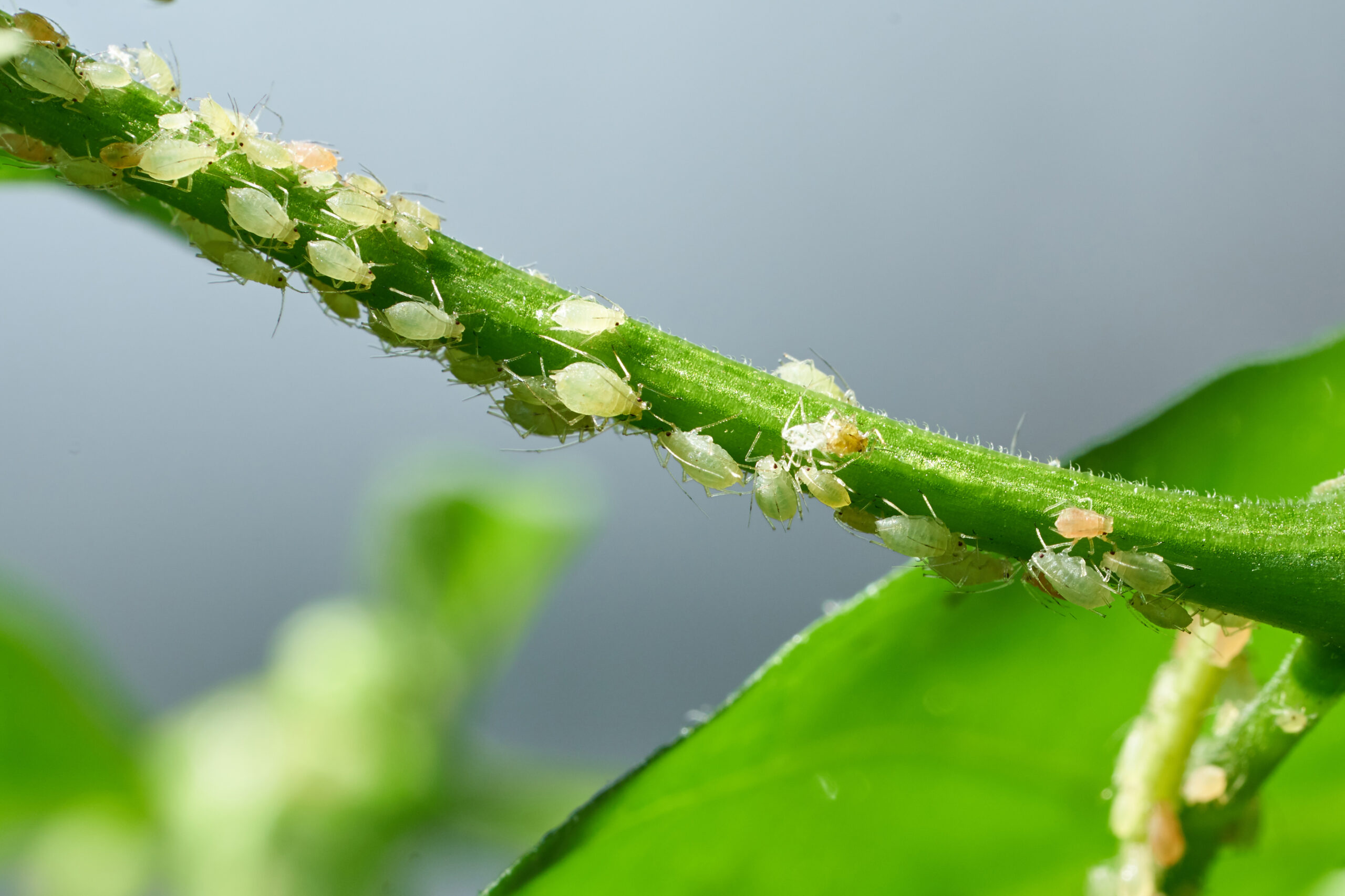
Favorites: honeysuckle, rose, tulip, carnation, gardenia
Every rose has its thorn, and every garden problem has its aphid. These are possibly the most common garden pests in the country, likely because these insects eat from a massive range of foliage. Aphids eat from the leaves of these plants most frequently, and often choose to hide on the underside of leaves to stay safe while they feed. They use their piercing mouthparts to puncture the leaf and drink the sap within. This diet is why they prefer softer leaves and succulents, as these types are easier to puncture. Aphids typically like to lay their eggs or birth live young (most are already pregnant females) on the leaves, but they can make their way up to the flower buds if they want a change of scenery.
Anyone who cares about their plants even a little knows the damage that a family of aphids can do. They harm plants in multiple ways and can eventually wipe out a whole section of greenery over time. Aphids drink the sap that is vital and keeps plants healthy, so it’s easy to see why flowers are unable to come back from this attack. When aphids have been feeding on a plant for a while, the leaves will become deformed and not produce as many flowers as usual. These insects also cause stunted growth in plants, which is more obvious when the surrounding plants are as healthy as ever. A different risk of an aphid invasion is the growth of black sooty mold on the leaves. Aphids deposit honeydew as they feed, and this sweet excrement can develop mold over time that will harm the plant in addition to the feedings.
Thrips
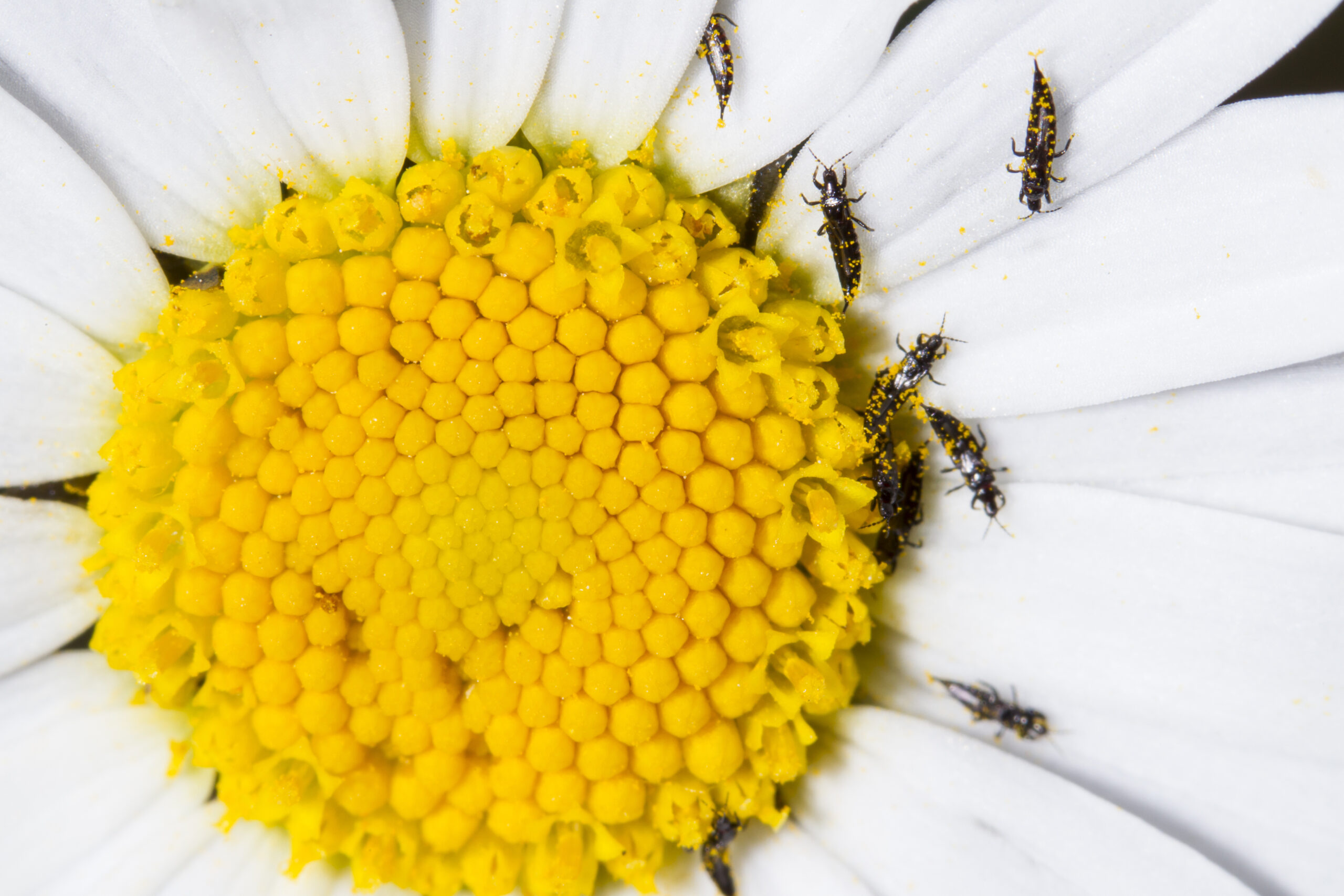
Favorites: rose, daisy, lily, carnation, iris
These pests are a major problem for flowering plants in particular. Thrips eat from both the flowers and the leaves, which makes it even more difficult for the plant to survive an invasion. The insects bite into the plant cells and pierce the tissues in the flowers while they feed. They will also lay their eggs in the flowers, but the hatched larvae thankfully aren’t nearly as active as the adults. However, all stages of thrips damage the plant in some way and seem to be more of a threat than other pests because they actively target young, growing plants that are not as likely to fully recover from an invasion.
Some thrip species do eat other insects, which is beneficial in theory. But this diet is not on the same level as their taste for plants, so the cons certainly outweigh the pros here. There are multiple ways that thrips damage a flowering plant, most of which are visually clear. They can cause silvery stripes to form on the leaves from the tissues being drained over time. When thrips feed from a plant for a long time, they can also cause the leaves to become distorted and the flowers to be too weak to open. This may also be due to the various plant diseases thrips can transmit if they fed on an infected plant first. Long story short, thrips are not an insect you wan to see anywhere near your garden, no matter how many insects they eat.
Japanese Beetles
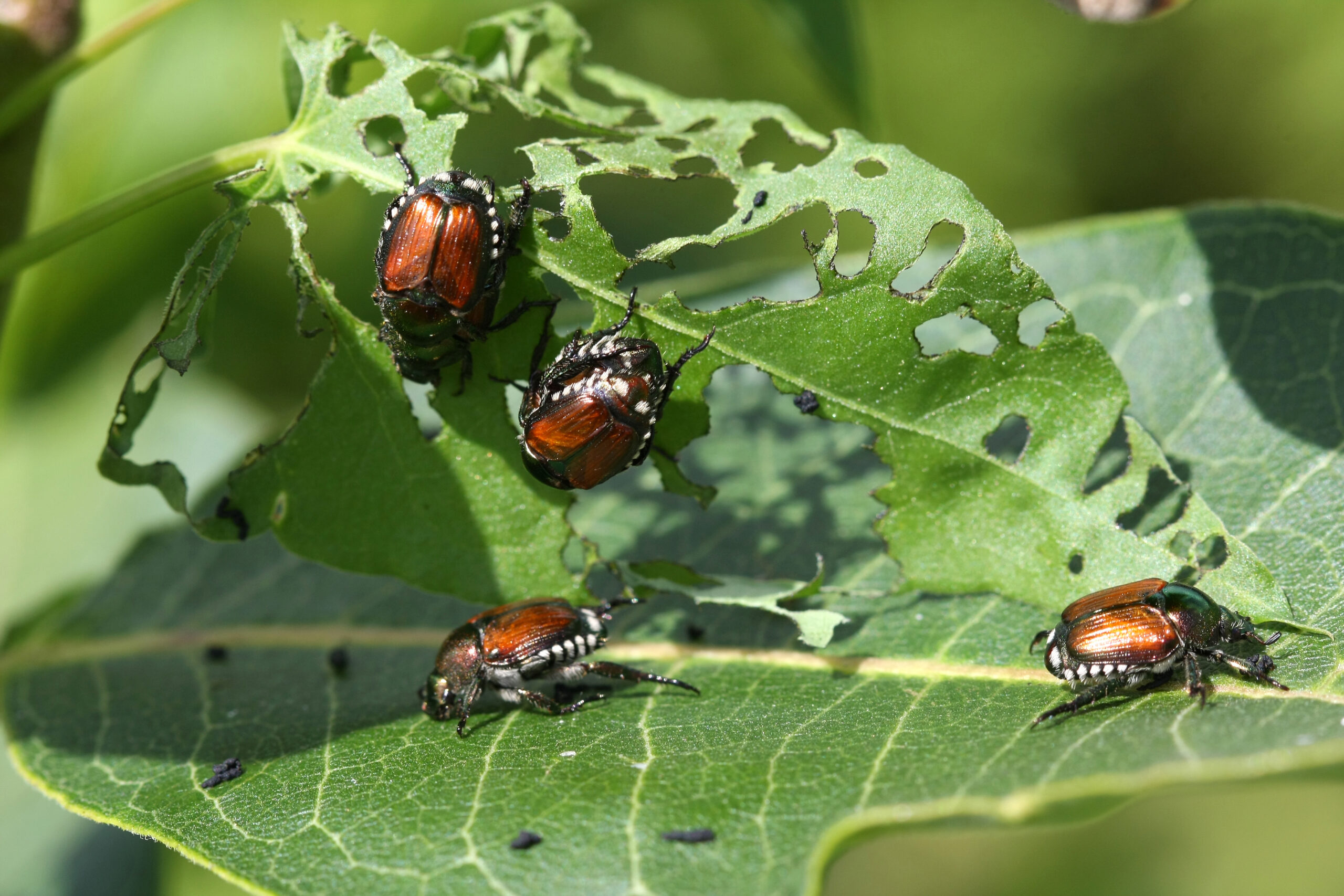
Favorites: rose, hibiscus, magnolia, crape myrtle
These beetles are not completely common in every part of the U.S., but for the states that do have these shiny pests, they know how much damage these insects can cause. Japanese beetles feed on various parts of the plant, depending on the life stage that the beetle is in. They lay their eggs in soil underneath grasses so that the grubs do not have to travel far for food. The hatched larvae will chew through the grass roots, and a major infestation can cause dead patches to appear on the grass that is right above their feeding spots. But adult beetles will devour the parts of the flowering plant that are above ground, leaving very little behind.
Japanese beetles will flock to the sunniest areas of the yard to feed, as they enjoy the warmth and the energy that sunlight gives them. They prefer softer plants for an easier chew, but will eat from more plant species than not. Some sources say that Japanese beetles like white and yellow flowers more than other colors, but that guideline is not set in stone. What Japanese beetles are known for is their tendency to skeletonize plants within a few days. This is when the beetle eats every tissue of the leaf between the veins, only leaving the “skeleton” of the leaf behind after feeding. Japanese beetles may look pretty with their shiny jade hue, but they are no friend to any garden that they visit.
April Showers Bring May Pest Solutions
Unfortunately, garden pests usually aren’t found until after the damage is done. It doesn’t help that most of them are too small to see upon first glance. This is why it is important to keep an eye on your plants during spring and summer when these pests are the most active. Some of the clear signs of a pest invasion include the plant wilting, yellowing, having mottled colors, and flowering less than usual. Our experienced technicians at Pointe Pest Control are all about noticing the details! We begin each service with a thorough inspection of the property to find signs of pest activity and entry points, especially if they have already made their presence known to the homeowner. We will then create a customized treatment plan to provide long-term solutions for each pest issue so that you can enjoy a pest-free home in every season. Contact us to learn more about our environmentally-friendly services and how we will keep your gardens looking better than ever this spring!
Citations
7 animals who love flowers just like us. (2018, August 15). Fresh Trimmings. Retrieved March 20, 2023, from https://bouqs.com/blog/animals-who-love-flowers/
A list of Valentines flowers (and the pests that love it). (2023, March 14). Top Best. Retrieved March 20, 2023, from https://topbest.ph/blogs/list-valentines-flowers-pests-love/
Blackstone, V.L. (2022, July 21). Garden pests that eat flower petals. SF Gate. Available at https://homeguides.sfgate.com/garden-pests-eat-flower-petals-25909.html (Accessed on March 20, 2023).
Controlling pests on flowers, roses & ornamental plants. (n.d.). Ortho. Retrieved March 20, 2023, from https://ortho.com/en-us/garden/controlling-pests-on-flowers-roses-ornamental-plants.html
Gibb, T.J. (2018, April). Flower garden pests. Purdue University: Extension Entomology. Available at https://extension.entm.purdue.edu/publications/E-70/E-70.html (Accessed on March 20, 2023).
McIntosh, J. (2021, November 16). 7 flower garden pests that can ruin your hard work. The Spruce. Available at https://www.thespruce.com/flower-garden-pests-1316110 (Accessed on March 20, 2023).
What plants do Japanese beetles attack?. (2020, August 12). ABC Termite & Pest Control. Retrieved March 20, 2023, from https://abctermite-pest.com/what-plants-do-japanese-beetles-attack/
Request a Free Quote Today
(We do not share your data with anybody, and only use it for its intended purpose)


